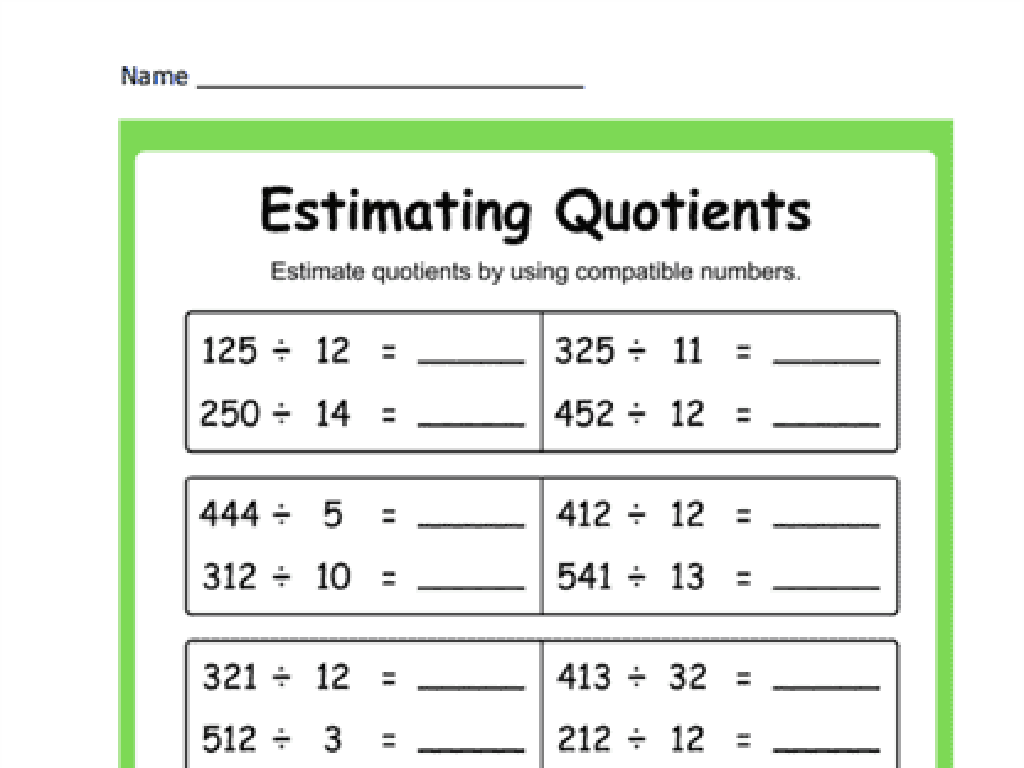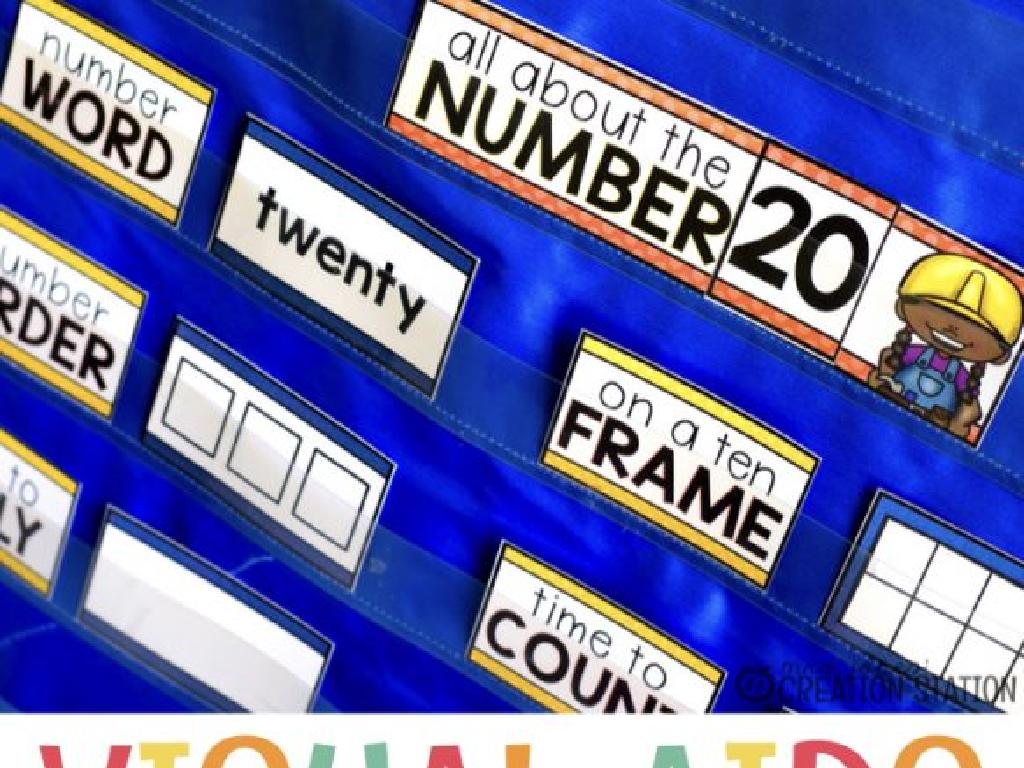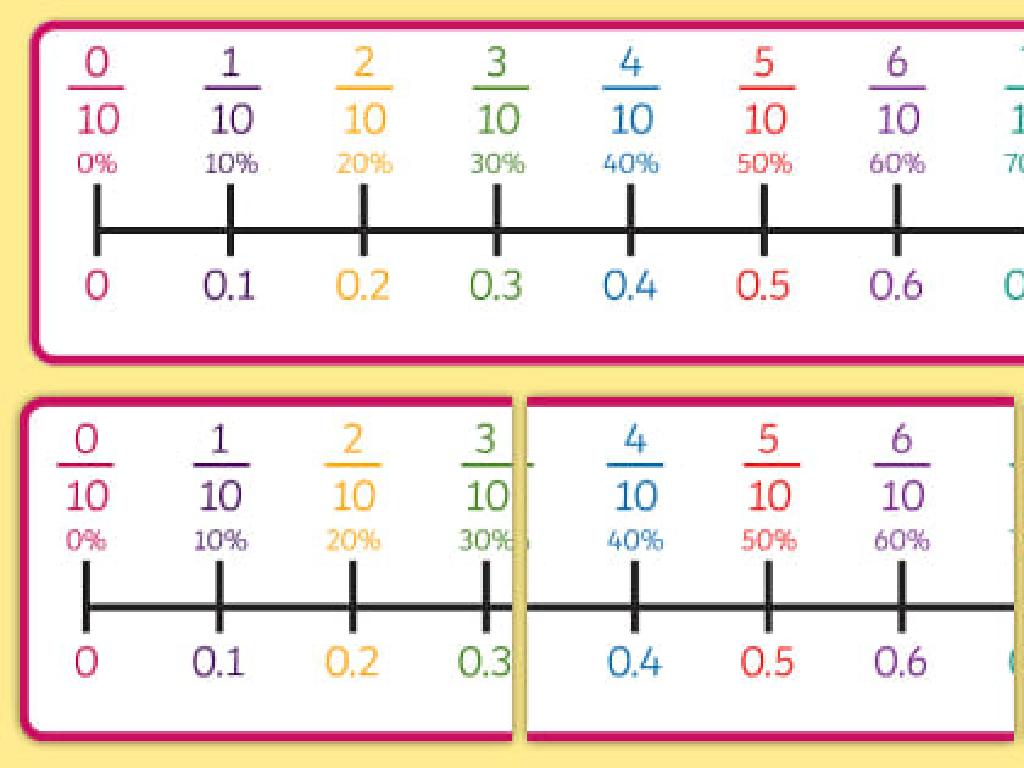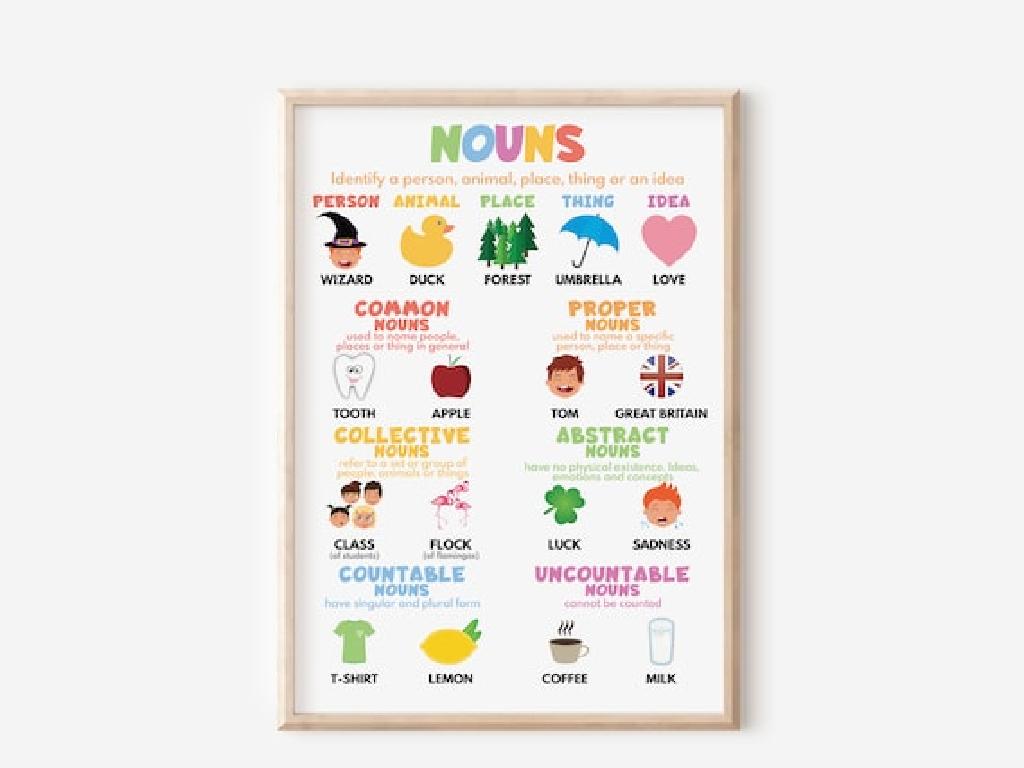Skip-Counting Puzzles
Subject: Math
Grade: Third grade
Topic: Skip-Counting
Please LOG IN to download the presentation. Access is available to registered users only.
View More Content
Welcome to Skip-Counting!
– What is Skip-Counting?
– Counting by numbers other than 1, like 2, 5, or 10
– Importance of Skip-Counting
– Helps with understanding multiplication and number patterns
– Everyday examples of Skip-Counting
– Using a clock, counting coins, or tallying scores
– Practice with puzzles
– Solve puzzles by skip-counting to find missing numbers
|
Skip-counting is a fundamental math skill where children count forwards or backwards by numbers other than 1. It’s crucial for developing a strong understanding of multiplication and recognizing patterns in numbers. In everyday life, skip-counting is used when reading clocks, counting money, or keeping score in games. Introduce skip-counting puzzles as a fun activity to reinforce these concepts. Have students practice by filling in missing numbers on a number line or within a number grid. Encourage them to share how they solved the puzzles and to create their own skip-counting sequences.
Skip-Counting Adventures
– What is Skip-Counting?
– Skipping numbers in a pattern, like hopping in a game.
– Skip by 2s, 5s, and 10s
– We can skip-count by various numbers, it’s like climbing steps of different heights.
– Skip-Counting: Number Hopping
– Imagine hopping over numbers on a number line to count faster.
– Practice Time: Counting by 2s
– Let’s all count together by 2s and see how far we can go!
|
This slide introduces the concept of skip-counting to third graders, making it relatable by comparing it to hopping over numbers. Start by explaining skip-counting as a way to count faster by ‘jumping over’ some numbers. Show how to skip-count by 2s, 5s, and 10s using examples on the board. Compare skip-counting to hopping over numbers on a number line to make it more intuitive. Engage the class with a practice session where everyone counts by 2s together. Encourage students to use their fingers or physical movements to represent the ‘hops’ as they count. This kinesthetic approach helps solidify the concept. Prepare different activities for students to practice skip-counting, such as filling in missing numbers on a number chart, singing a skip-counting song, or playing a skip-counting game with a partner.
Skip-Counting Patterns
– Identify skip-counting patterns
– Patterns like 2, 4, 6 show counting by twos
– Predict the next sequence numbers
– What comes after 10, 15, 20 in counting by fives?
– Group activity with hundreds chart
– Use the chart to find and color skip-counting sequences
|
This slide introduces students to the concept of skip-counting patterns, an essential skill in understanding number sequences and building a foundation for multiplication. Start by explaining how to identify patterns when skip-counting by different numbers. Then, challenge students to predict the next numbers in a given sequence. For the group activity, provide a hundreds chart and have students work together to find and color in the numbers as they skip-count by 2s, 5s, or 10s. This visual and interactive approach helps solidify their understanding of patterns in numbers. Prepare to facilitate the activity by organizing students into small groups and providing them with colored pencils or markers. Have additional skip-counting puzzles ready for early finishers or for extending the lesson.
Mastering Skip-Counting Puzzles
– What is skip-counting?
– Counting by numbers other than 1, like 2, 5, or 10
– Steps to solve puzzles
– Find the pattern, start counting, fill in blanks
– Example: Fill missing numbers
– 2, 4, __, 8, __, 12 (What numbers go in the blanks?)
– Practice makes perfect
|
Skip-counting puzzles help students understand patterns in numbers and prepare them for multiplication. Start by explaining skip-counting as a method to count forward or backward by a number other than one. Demonstrate how to identify the pattern in a sequence and use it to solve puzzles. Provide an example puzzle on the board and solve it together with the class. Encourage students to practice with different sequences and intervals, such as 2’s, 5’s, and 10’s. This slide should engage students with the concept of skip-counting through interactive puzzle-solving.
Crafting Skip-Counting Puzzles
– Steps to make a puzzle
– Follow the guide to create your puzzle
– Pick a skip-count sequence
– Choose a sequence like 2s, 5s, or 10s
– Share puzzles with friends
– Exchange puzzles with your classmates
– Enjoy solving puzzles together
– Have fun figuring out each other’s sequences
|
This slide is aimed at guiding students through the process of creating their own skip-counting puzzles. Start by explaining the steps to create a puzzle, such as choosing a pattern and creating a sequence. Encourage students to pick a sequence they’re comfortable with, like counting by 2s, 5s, or 10s. Emphasize the importance of sharing their puzzles with classmates to foster a collaborative learning environment. Finally, highlight the fun aspect of solving puzzles created by their peers. Provide detailed guidelines for the teacher on how to facilitate this activity, suggesting they monitor the students’ progress and offer help when needed. Possible activities could include creating puzzles of varying difficulty, using different starting points, or incorporating themes into the puzzles.
Skip-Counting Puzzle Challenge
– Pair up for puzzle solving
– Create puzzles for each other
– Think of a sequence and let your partner fill in the blanks
– Solve your partner’s puzzle
– Use skip-counting skills to find the missing numbers
– Present puzzles and solutions
|
This class activity is designed to encourage collaboration and application of skip-counting skills. Students will work in pairs, which promotes teamwork and communication. Each pair will create a skip-counting puzzle for the other to solve, using sequences with missing numbers. For example, one student might present a sequence like ‘2, __, 6, __, 10,’ and their partner would fill in ‘4’ and ‘8’ by skip-counting by twos. After solving, students will present their original puzzles and the solutions to the class, allowing them to demonstrate their understanding and explain their thought process. This activity can be varied by using different skip-counting intervals (by 2s, 5s, 10s, etc.) and by introducing more complex patterns for advanced students.
Conclusion: Mastering Skip-Counting Puzzles
– Recap: What is Skip-Counting?
– Counting by numbers other than 1, like 2s, 5s, or 10s.
– Solving and creating puzzles
– Use patterns to fill in missing numbers.
– The value of Skip-Counting
– Helps with multiplication, division, and understanding number patterns.
– Q&A session
|
As we wrap up today’s lesson on skip-counting puzzles, let’s review the key points. Skip-counting is a fundamental skill that helps with understanding patterns and prepares students for more complex math concepts like multiplication and division. We’ve learned how to identify the sequence in puzzles and how to create our own. Now, let’s open the floor for any questions the students might have. This is an opportunity to assess understanding and clarify any confusion. Encourage students to think about how they used skip-counting today and to share any strategies they found helpful.






